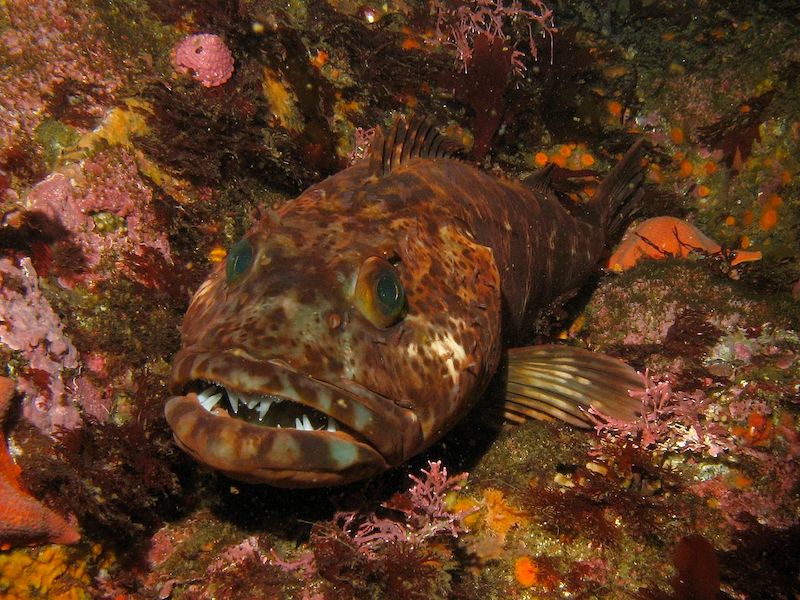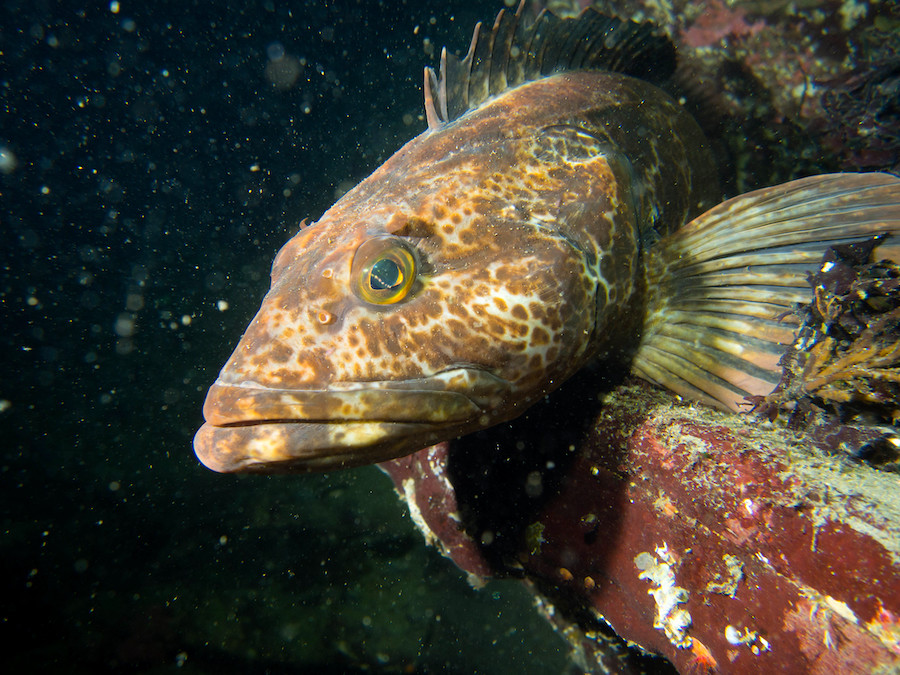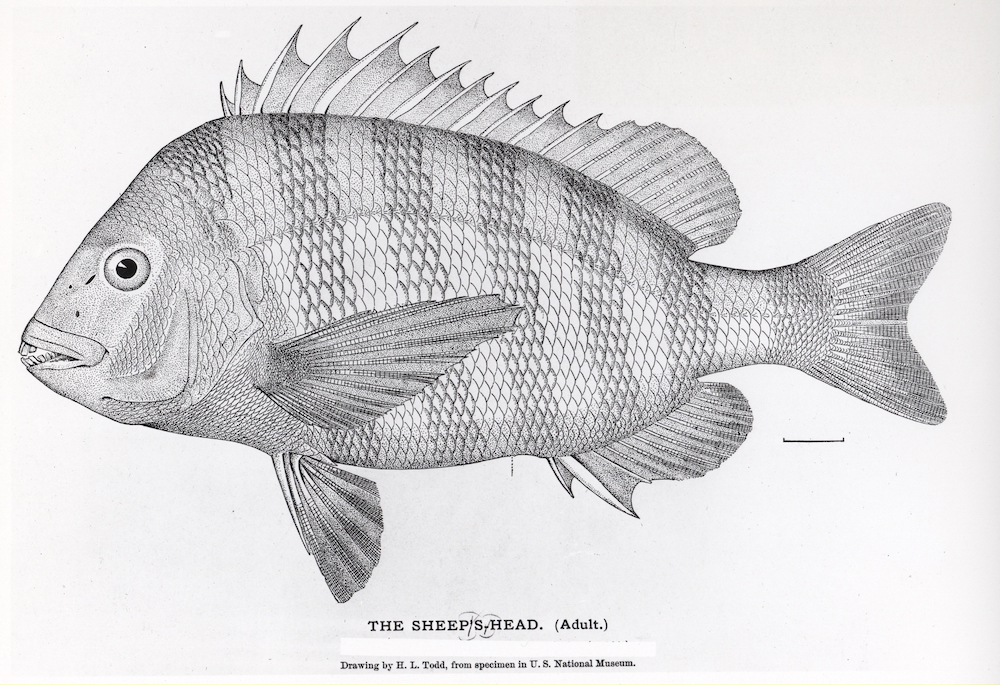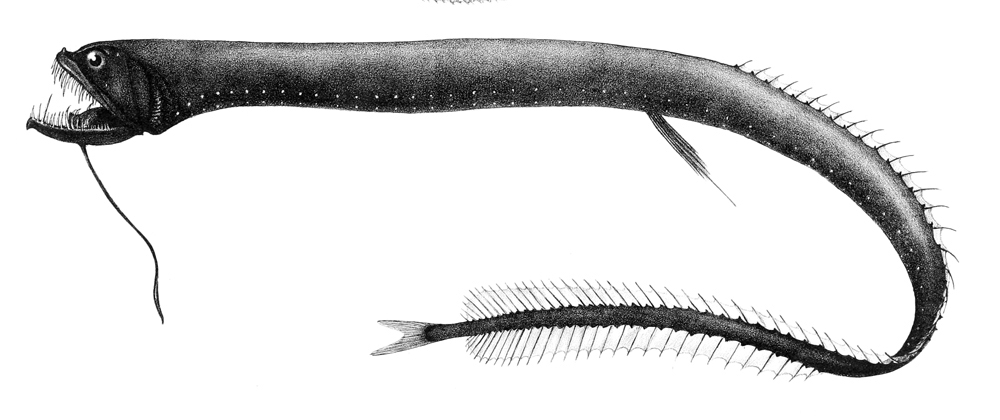Smile! 3 Fish with Weird Teeth
These fish have teeth that would surprise any dentist

We don’t talk a lot about animal teeth. If we do, it’s around big predators like wolves, lions and sharks (and even then, it’s in context of how miserable it would be to come face-to-face with those chompers!) But the animal kingdom is full of wild and unusual smiles, and studying teeth helps us better understand different animals’ roles in their habitats.
Today, we’re exploring three fish (that aren’t sharks) that have interesting sets of teeth.
Lingcod

There are a lot of things that make the lingcod unique. First, there is their rare and mysterious coloring—although most lingcod are brown, an estimated 20% are a bright blue-green color. Second, they replace 3% of their needle-like teeth every day. To put that in context, that would be like humans losing and re-growing one tooth every day. A recent study assessed over 10,000 teeth in 20 lingcod and found each fish replaced about two teeth daily, even if those teeth aren’t damaged. Their research suggests some teeth are replaced more quickly than others because they have a greater risk of breaking. That way, these voracious predators can be sure to have razor-sharp bites no matter what.
Sheepshead

Some people don’t like that sheepshead have human-like teeth, but beauty is in the eye of the beholder! Adult sheepshead have three rows of molars in their upper jaws and two in their lower jaw, in addition to grinders that help them demolish prey. They use these powerful crushers to feast on hard-shelled invertebrates like clams, oysters and barnacles. They also have front teeth coated with enamel, just like human teeth. Although most fish don’t have enamel-coated teeth, enamel actually evolved from the scales of ancient fish (but that is a story for another time).
Black dragonfish

It wouldn’t be a “weird fish” roundup without including something from the deep sea. Black dragonfish are found in tropical and subtropical regions in depths up to 6,500 feet below the surface. They are sexually dimorphic, meaning the males and females look different, and the females are the ones with big teeth. Males have no teeth at all, sorry guys!) Female dragonfish teeth are long and sharp and almost fully transparent—meaning that although their bodies are bioluminescent, they can sneak up on prey without giving away their deadly dentition.
Although you can probably file “fish teeth facts” under “knowledge I will never need to use again,” I hope you enjoyed learning about these toothy fishes.
Interested in learning more weird and wild fish facts? Check out our posts on the gulper eel, red-lipped batfish and stonefish.